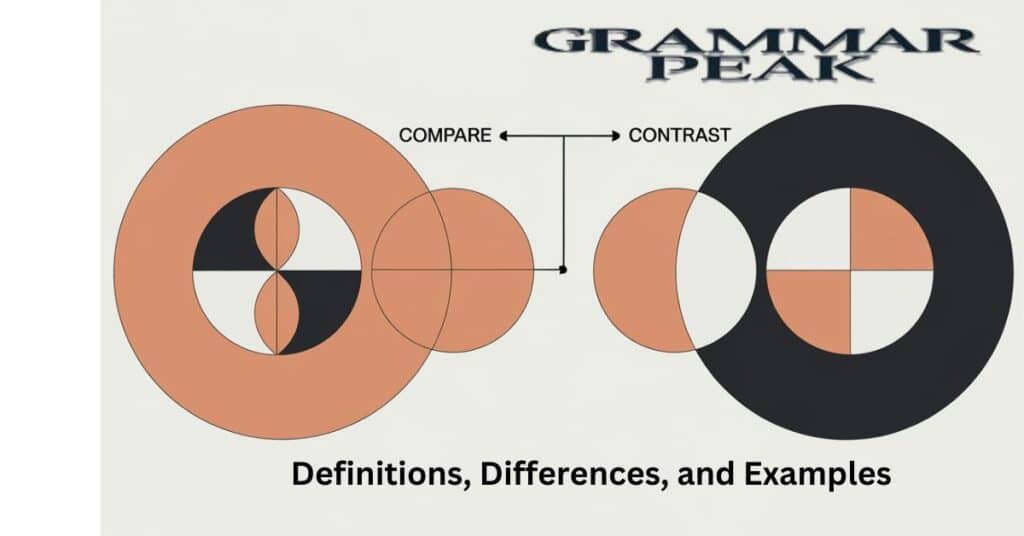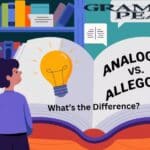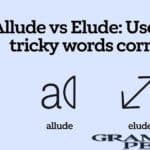Understanding the compare vs contrast concept is essential for effective communication. These terms help us analyze and evaluate information. They allow us to find similarities and differences between two or more subjects.
In this article, we will explore the definitions, differences, and examples of comparing and contrasting. We will also look at their origins and synonyms. By the end, you will have a clear understanding of how to use these concepts in your writing and everyday life.
This comparison might reveal how their choices lead to different consequences, enhancing your understanding of the narrative. By highlighting the similarities and differences between characters, you can appreciate the complexities of the story more fully. Overall, the purpose of comparing is to draw attention to what is alike between subjects. Whether in everyday decision-making or literary analysis, this technique helps you grasp complex ideas more easily. By effectively comparing, you can navigate choices and discussions with greater clarity and confidence.
What Does the Word “Compare” Mean?
The word “compare” refers to the act of examining two or more items to identify their similarities and differences. This process allows you to analyze various aspects of the subjects involved. For instance, when comparing two smartphones, you might evaluate their features, prices, and user reviews.
This detailed examination aids in making an informed decision about which device best suits your needs. In literature, the concept of comparing becomes particularly valuable. For example, when you compare two protagonists in a story, you can uncover deeper meanings and insights into their character development.
What Does the Word “Contrast” Mean?
On the other hand, “contrast” focuses on identifying differences. When you contrast, you highlight unique traits that set items apart. For example, contrasting two restaurant menus can show how different cuisines appeal to various tastes.
In writing, contrasting characters can create tension and conflict. For instance, in a novel, a hero and a villain often have opposing traits. This contrast makes the story more engaging. The purpose of contrast is to emphasize what is different. Understanding these differences can lead to a richer analysis of the subjects involved.
You will like Compare vs Contrast: Definitions, Differences, and Examples
“Compare” vs “Contrast”: The Differences
When we look at the differences between compare and contrast, we see that they serve different purposes.
purpose
- When we compare, we examine two or more items to identify their similarities. This process allows us to see commonalities and draw connections between different elements.
- For instance, comparing two novels by the same author can reveal recurring themes or stylistic patterns, enriching our understanding of the author’s work.
contrast
when we contrast, we focus on highlighting the differences between the subjects. This technique enables us to understand what sets each item apart.
- contrasting two political ideologies can shed light on their unique principles and approaches, helping us comprehend the distinct perspectives they represent.
- Both comparing and contrasting aim to provide useful knowledge to the reader, enhancing our ability to make informed decisions and engage in insightful discussions.
focus of compare
The focus of compare and the focus of contrast are two different but equally important aspects of analysis. When we focus on comparison, we zero in on the similarities between two or more subjects.
For example, in comparing two species of birds, we might look at aspects such as their diet, habitat, or behaviors that they share. This focus allows us to understand their common characteristics and can lead to a deeper comprehension of their nature.
focus of contrast
The focus of contrast is on the differences that set two or more subjects apart. Using the same example, contrasting the two species of birds would involve examining the unique traits of each, perhaps their different migration patterns or distinctive physical features.
This focus helps us to appreciate the diversity and uniqueness of each subject, providing a more comprehensive view of the world around us.
Read must Be Compare vs Contrast: Definitions, Differences, and Examples
Answering your question without the Model Agent:
| Main Keywords | Description |
| Origins | Refers to the beginning or source of something, often indicating where it started or how it developed over time. |
| Development | The process of growth, progress, or evolution of a concept, idea, or practice over time. |
| Contrast | The act of comparing two or more subjects to highlight their differences and distinctive features. |
| Characteristics | The defining traits or qualities that distinguish one subject from another. |
| Comparison | The act of evaluating two or more items to identify similarities and differences. |
| Analysis | A detailed examination of the elements or structure of something, typically for discussion or interpretation. |
| Evaluation | The systematic assessment of something to determine its value, significance, or quality. |
| Diversity | The range of different things, often used to describe the variety within a particular context or field. |
| Nuance | A subtle difference or distinction in meaning, expression, or response, often important in understanding complex subjects. |
| Context | The circumstances or setting surrounding an event, statement, or idea that help clarify its meaning. |
Examples in Context
examples of comparison
- When we compare two different breeds of dogs, we might look at their size, temperament, and lifespan.
- In a classroom setting, students often compare two historical events to understand their impacts and consequences.
- As a consumer, you might compare the prices and features of two cars before making a purchase.
- In the world of fashion, designers often compare different fabrics to decide which one suits their design best.
- Biologists compare DNA sequences of different species to understand evolutionary relationships.
- In a book club, members might compare the themes and characters of two novels to gain a deeper understanding.
- When choosing a college to attend, students often compare factors like location, tuition, and program offerings.
- In cooking, chefs might compare the taste and texture of two types of cheese to create the perfect dish.
- Architects often compare building materials when designing a structure to ensure it is both functional and aesthetically pleasing.
- Environmentalists compare different energy sources to evaluate their impact on the environment.
- In music, critics often compare the work of two artists to discuss their style and influence.
- Athletes might compare different types of workout routines to determine which one helps them achieve their goals faster.
Examples of contrast
- When we compare two different breeds of dogs, we might look at their size, temperament, and lifespan.
- In a classroom setting, students often compare two historical events to understand their impacts and consequences.
- As a consumer, you might compare the prices and features of two cars before making a purchase.
- In the world of fashion, designers often compare different fabrics to decide which one suits their design best.
- Biologists compare DNA sequences of different species to understand evolutionary relationships.
- In a book club, members might compare the themes and characters of two novels to gain a deeper understanding.
- When choosing a college to attend, students often compare factors like location, tuition, and program offerings.
- In cooking, chefs might compare the taste and texture of two types of cheese to create the perfect dish.
- Architects often compare building materials when designing a structure to ensure it is both functional and aesthetically pleasing.
- Environmentalists compare different energy sources to evaluate their impact on the environment.
- In music, critics often compare the work of two artists to discuss their style and influence.
- Athletes might compare different types of workout routines to determine which one helps them achieve their goals faster.
Synonyms of “Compare” and “Contrast”
synonyms of compare
- Evaluate: To evaluate means to assess the characteristics and qualities of different items in order to determine their similarities and differences.
- Contrast: To contrast involves examining two or more subjects to highlight their distinct features and differentiate them from one another.
- Analyze: To analyze requires breaking down the components of various subjects to compare their elements and understand their relationships.
- Examine: To examine means to inspect and study multiple items closely in order to compare their attributes and make informed decisions.
- Assess: To assess involves appraising the value or significance of different options, allowing for a comparison of benefits and drawbacks.
- Review: To review means to look over and reflect on various subjects to compare their merits and shortcomings.
- Scrutinize: To scrutinize entails a detailed and critical examination of items, allowing for a thorough comparison of their features.
- Juxtapose: To juxtapose means to place two or more subjects side by side in order to compare their characteristics directly.
- Differentiate: To differentiate involves recognizing and pointing out the differences between two or more subjects, facilitating a comparison.
- Relate: To relate means to draw connections between different items, allowing for a comparison of their similarities.
- Correlate: To correlate involves establishing a relationship between two subjects, which aids in comparing their variables.
- Match: To match means to find similarities between items for the purpose of comparison, determining how closely they align with each other.
synonyms of “Contrast”
- Differentiation: Differentiation involves recognizing and articulating the distinctive qualities of subjects to highlight their differences.
- Discrepancy: Discrepancy refers to the noticeable differences or inconsistencies between two or more items when examined closely.
- Divergence: Divergence describes the process of moving apart or differing, helping to emphasize the unique characteristics of each subject.
- Variation: Variation signifies the differences that exist among items, showcasing how they deviate from one another.
- Comparison: Comparison can also imply contrasting, as it involves evaluating two or more subjects to identify their differences.
- Distinction: Distinction refers to the recognition of the differences that set subjects apart, making their unique qualities clear.
- Opposition: Opposition highlights contrasting elements, showcasing how subjects stand in stark contrast to one another.
- Conflict: Conflict denotes the inherent differences or disagreements between subjects, emphasizing their contrasting viewpoints or characteristics.
- Polarization: Polarization describes the process by which subjects move towards opposite ends of a spectrum, illustrating their differences.
- Contrastive Analysis: Contrastive analysis is a systematic comparison that examines the differences between two or more subjects in detail.
- Antithesis: Antithesis involves presenting opposing ideas or concepts, emphasizing their contrasting nature.
- Incompatibility: Incompatibility refers to the quality of being unable to coexist due to significant differences, highlighting the contrasts between subjects.
Origins of the Words “Compare” and “Contrast”.
origins of “Compare”
The word compare originates from the Latin term “comparare,” which means “to pair together” or “to set side by side.” This Latin root combines “com-“ (together) with “parare” (to prepare or make equal).
The evolution of the term reflects the act of evaluating two or more items by aligning them to identify their similarities and differences. Over time, it has become a fundamental concept in various fields, including literature, science, and social studies, where comparison plays a crucial role in analysis and understanding.
origins of contrast
The term contrast has its roots in the Latin language, specifically from the combination of “contra-“ (against) and “stare” (to stand). This etymology reflects the essence of the term, which involves setting things in opposition to highlight their differences. The term was adopted into English via French from Italian, further evolving its usage and connotations.
In English, contrast has been used since the 16th century to denote the distinction or emphasis of difference between two or more subjects. The term has found broad application in various fields, from art, where it refers to the difference in light and dark, to statistics, where it refers to the difference between two means.
FAQ” S
What is the difference between compare and contrast?
Compare focuses on similarities, while contrast emphasizes differences.
How can I use compare and contrast in writing?
Use these techniques to analyze subjects and present clear arguments.
What are examples of compare and contrast?
Comparing two movies or contrasting different cultures are common examples.
What are synonyms of compare and contrast?
Synonyms include evaluate for compare and differentiate for contrast.
What are the origins of the words compare and contrast?
Compare comes from Latin “comparare,” while contrast comes from Italian “contrasto.”
Conclusion
Understanding the compare vs contrast concepts is vital for effective communication. By knowing the definitions, differences, and examples, you can enhance your analytical skills. Whether you are comparing products or contrasting ideas, these techniques will help you express your thoughts clearly. Embrace the power of comparing and contrasting to improve your writing and decision-making.

Mason Blake is an experienced blogger with a passion for language and communication. With years of expertise in crafting informative and engaging content, Mason shares valuable insights on grammar and writing. His clear, concise, and reader-friendly approach has earned him a loyal following, helping readers sharpen their language skills and master the art of effective communication.








I don’t think the title of your article matches the content lol. Just kidding, mainly because I had some doubts after reading the article.
Thanks for sharing. I read many of your blog posts, cool, your blog is very good.
Thanks for sharing. I read many of your blog posts, cool, your blog is very good. https://www.binance.info/register?ref=P9L9FQKY
Your point of view caught my eye and was very interesting. Thanks. I have a question for you.
Thank you for your sharing. I am worried that I lack creative ideas. It is your article that makes me full of hope. Thank you. But, I have a question, can you help me? Создать личный аккаунт
Thank you for your sharing. I am worried that I lack creative ideas. It is your article that makes me full of hope. Thank you. But, I have a question, can you help me?
Thank you for your sharing. I am worried that I lack creative ideas. It is your article that makes me full of hope. Thank you. But, I have a question, can you help me?
Thanks for sharing. I read many of your blog posts, cool, your blog is very good.
Elevate your vape experience with Fume x Fruitia Flavors. Juicy blends of tropical fruits provide smooth, consistent flavor that delights with every inhale.
Thank you for your sharing. I am worried that I lack creative ideas. It is your article that makes me full of hope. Thank you. But, I have a question, can you help me?